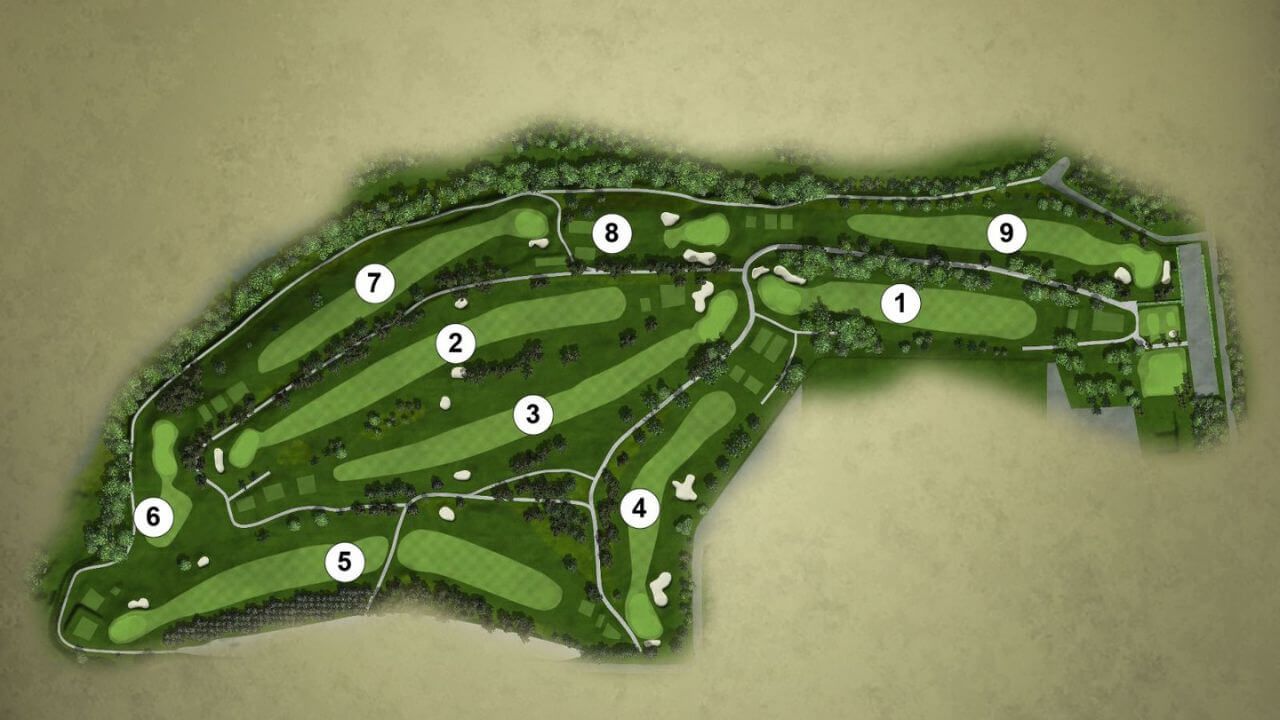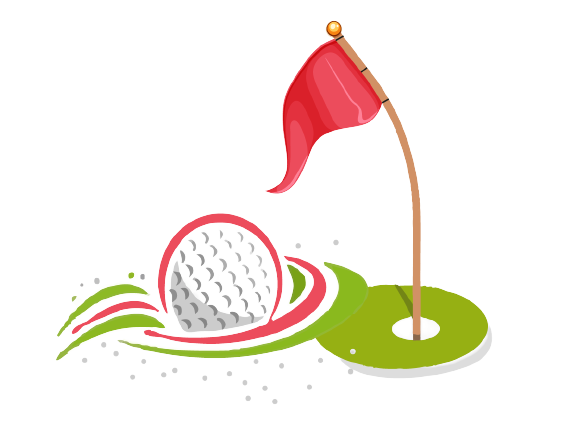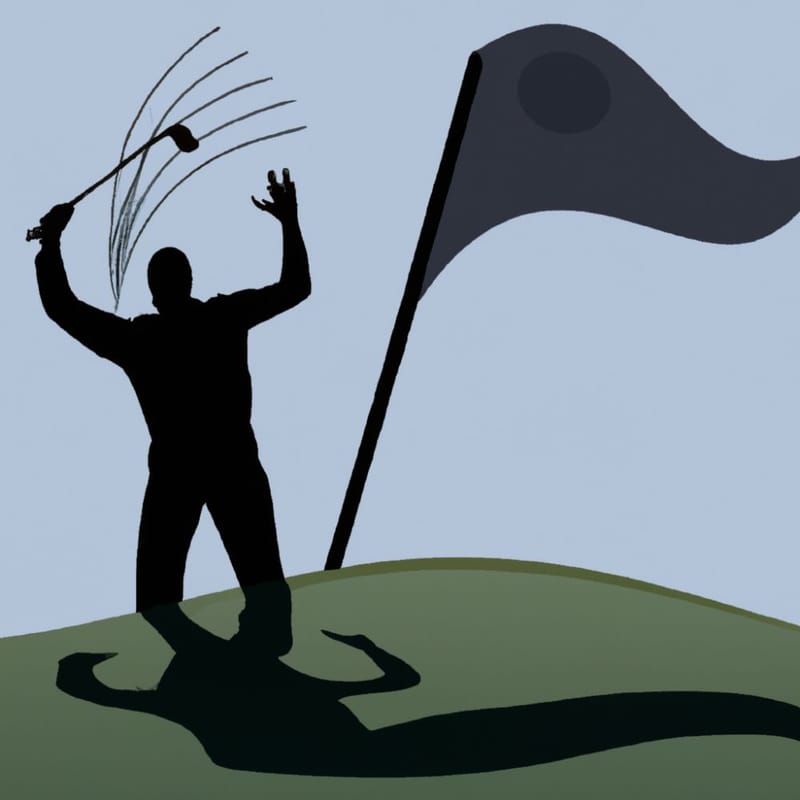Content Summary
Like most golfers, you are probably disappointed to arrive at a course and find the putting greens have just been aerated. This necessary maintenance actually benefits your game in the long run.
I know, I know. Are you out of your mind? Aerated greens mean bumpy greens which mean missed putts. All true. But keep reading to find out why this is a must for the health of the greens and your golf game.
(Yes, some golfers utilize the "two-putt rule" during this time but our foursome considers the "get it in the hole rule" to work best.)
The United States Golf Association's Green Section agronomists work with courses across North America to create sustainable greens that give golfers the best experience, even if it means occasionally putting on recently aerated surfaces.
Though a pain in the rear in the short term, aerating greens provide critical long-term improvements that make temporary inconveniences worthwhile for golfers.
Putting green aeration is never popular, but it is an essential part of providing consistent, high-quality playing conditions. (USGA/George Waters)
Why Aerating Greens is Essential
Putting greens get a lot more foot traffic than any other part of a golf course. This constant wear and tear compacts the underlying soil, inhibits healthy turf growth, and diminishes the quality of the putting surface over time.
Aerating is a way to relieve this compaction by punching holes into the dense ground, providing pathways for air, water, and nutrients to better reach the grassroots. The process also controls thatch buildup (a layer of living and dead plant material found between the green grass blades and the soil), promotes drainage, and stimulates new growth to improve overall turf health and playability.
While inconvenient, and in some cases downright annoying when greens are temporarily closed, aeration is a vital agronomic practice that delivers long-standing playing benefits.
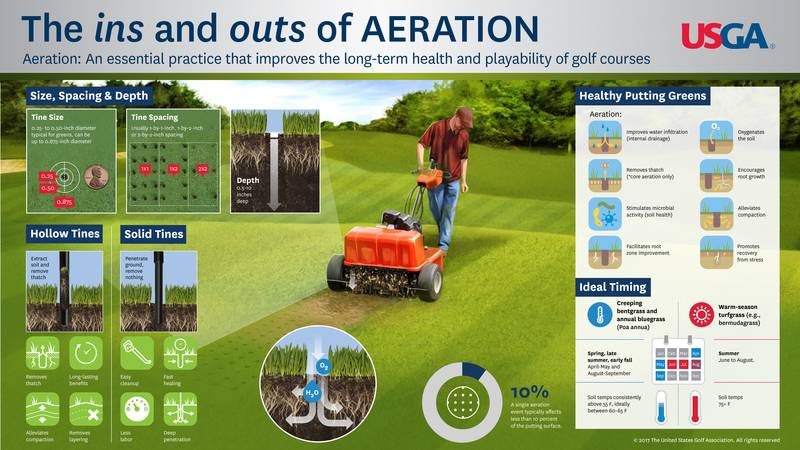
The Ideal Timing for Aeration
Are you wondering why green aeration occurs when putting surfaces seem to be in peak condition, rather than when play is slower? This is because the healthiest turf recovers fastest from the disruption.
Aerating when the grass is actively growing minimizes damage and yields the quickest turnaround to optimal conditions. Performing aeration during cooler seasons or when the turf is stressed lengthens the recovery, increases weed susceptibility, and risks lasting damage.
Though temporarily closing prized greens at the height of play is inconvenient, the prime timing allows courses to resume normal operations much faster than aerating during slower periods.
Our local course does the aeration off hours and do not have to shut down any greens. You then just have to put up with the ball bouncing rather than rolling when you putt. Once a week or two has passed the greens are again at their best, so we welcome the aerating.
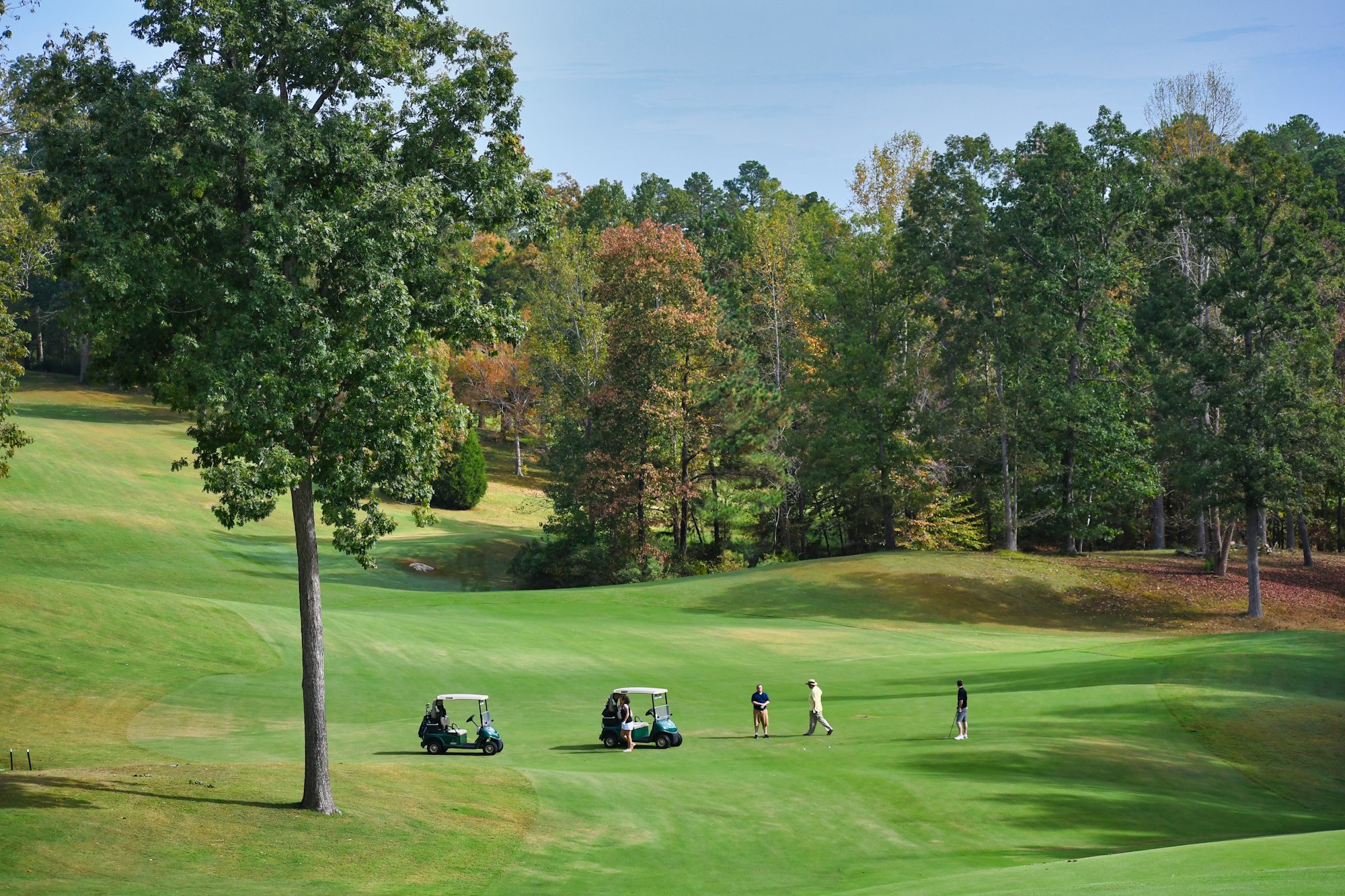
What to Expect During the Aeration Process
Seeing greens freshly dotted with holes and debris immediately after aeration can be an alarming sight for golfers. However, the extent of disruption is usually less severe than initial appearances suggest.
On average, only 5-10% of a green's surface area is affected by the aeration process itself. Greens are then top-dressed with sand to fill the holes and smooth the putting surface.
This sand application may seem excessive, but it helps accelerate healing and improves conditions within a few days. Golfers may need to take more care putting and chipping around the holes at first, but normal play quickly resumes.
Courses try to minimize downtime by only closing holes for the time needed to aerate and top-dress greens. So while the look of pockmarked greens can be jarring, play is not significantly impacted for long.
Why Sand Topdressing is Vital
Once aeration is complete, a heavy sand topdressing is applied that may seem to detract from playability at first. But this sand fills the holes, creating channels for air and water to reach the grassroots better.
It also smooths over the aeration holes and debris, speeding the return to an even-putting surface. Topdressing sand dilutes thatch accumulation from grass clippings that can become a dense barrier restricting proper drainage and turf growth over time.
Finally, it provides essential nutrients that aid recovery while crowding out potential weed growth. Aerating without this important topdressing would mean longer closures and poorer conditions. So while excess sand may be an unpleasant sight, it's integral to restoring greens quickly.
Filling aeration holes with sand speeds up recovery and helps make the putting surface firm and smooth. (USGA/George Waters)
How Aeration Benefits Golfers
Understanding the rationale behind greens aeration can help golfers cope with the inevitable disruptions. While pre-round irritation is understandable, keeping the long-term benefits in perspective makes the short-lived hassle more bearable.
Remembering that agronomists' time aeration to minimize downtime can assuage frustration over poorly timed closures. Recognizing that more holes are still playable than it initially seems can encourage positive thinking.
And knowing that sand topdressing hastens full recovery can temper annoyance at sanded greens. Most importantly, visualizing future rounds with improved turf quality, smoother rolls, and truer putts allows golfers to appreciate that proper aeration, despite its temporary troubles, helps provide the peak playing conditions we desire.

FAQ's - Why Do Golf Courses Aerate Greens
Why is aerating greens such a big deal?
Aerating greens are a crucial component of maintaining healthy and playable golf courses. It helps to improve the overall health of the turf, enhance root growth, and prevent excessive thatch buildup. By allowing air, water, and nutrients to penetrate the soil, aeration promotes healthier and stronger greens that can better withstand the stresses of constant play.
What is core aeration?
Core aeration is a common method used to aerate golf course greens. It involves the removal of small cores of soil from the greens, which helps to alleviate soil compaction and improve drainage. These cores are then left on the surface or lightly top-dressed with sand to aid in the recovery process.
Why do golf courses aerate their greens?
Golf courses aerate their greens to maintain optimal playing conditions and improve turf health. Constant foot traffic, golf ball impacts, and the use of heavy equipment like mowers and carts can lead to soil compaction and the accumulation of organic matter known as thatch. Aerating greens help to alleviate these issues and promote healthier and more resilient playing surfaces.
How long does it take for greens to recover from aeration?
The recovery time for greens largely depends on various factors such as weather conditions, grass type, and the extent of the aeration process. Typically, it can take anywhere from 2 to 4 weeks for greens to fully recover and regain their smooth and consistent putting surfaces.
Can I still play golf on aerated greens?
Yes, you can still play golf on aerated greens. While the playing surface may not be as smooth or fast immediately after aeration, many golf courses allow play on aerated greens. Consider it as an opportunity to work on your ball flight control and adapt to the temporary change in the golf course conditions.
Does aeration affect the speed of the greens?
Aeration can temporarily affect the speed of the greens. The small holes or channels created during aeration can disrupt the smoothness of the putting surface, which can lead to slower and less consistent ball roll. However, after the recovery period, greens should return to their normal speed.
Who is responsible for aerating the greens?
The aeration of golf course greens is typically the responsibility of the golf course superintendent. The superintendent, in collaboration with the course maintenance staff, determines the best timing and method for aeration based on factors such as weather conditions, play schedules, and overall course care.
Can I book a tee time during aeration?
Golf courses usually try to schedule aeration when it has the least impact on play. However, there may still be a period when aeration is taking place, and tee times may be limited or restricted. It's always a good idea to check with the golf course in advance to determine their aeration schedule and plan your tee time accordingly.
How does aeration benefit the overall health of the golf course?
Aeration plays a vital role in maintaining the overall health of a golf course. It helps to improve soil structure, reduce compaction, enhance water and nutrient movement, and promote better root growth. These benefits contribute to the long-term sustainability of the turf and provide golfers with healthier and more enjoyable playing surfaces.
Why do greens receive more aeration compared to other areas of the golf course?
Greens receive more aeration compared to other areas of the golf course because they are subject to greater wear and tear due to the high volume of foot traffic and golf ball impacts. Aeration helps to relieve compaction and rejuvenate the turf to ensure that the greens remain in good condition throughout the golf season.
Conclusion
Golf courses have performed vital agronomic practices that both maintain turf health and preserve the essence of the game for decades.
Greens aeration exemplifies this balancing act. While disruptive, it sustains the high standards golfers expect. When golfers understand why proper aeration timing, procedures, and topdressing are chosen, they can accept the short-term inconvenience for long-term gain.
Aerating may temporarily come between golfers and pristine greens, but ensuring this necessary process continues will allow them to keep enjoying those greens for years to come.
Thank you for visiting, and we hope to see you back soon!
